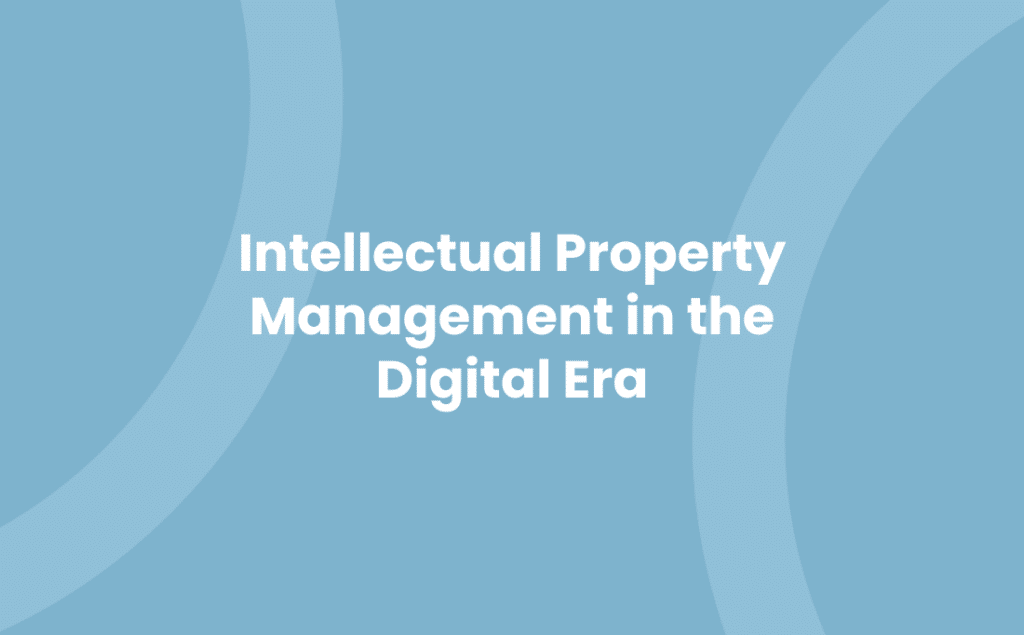In the age of rapid technological advancement, digital transformation isn’t just a buzzword‚ it’s a necessity. It’s reshaping businesses, industries, and economies. But as you ride the wave of this digital revolution, have you ever considered how it impacts your intellectual property management?
You’re not alone if you haven’t. Despite its pivotal role in fostering innovation and fuelling growth, intellectual property management often gets overlooked in digital transformation strategies. Yet, it’s this very intersection where exciting opportunities and potential pitfalls lie. Let’s delve into this intriguing nexus of digital transformation and intellectual property management, and discover how you can successfully navigate it.
The Concept of Digital Transformation
Digital transformation represents the evolution of all business activities, competencies, and models to fully take advantage of changes and opportunities presented by digital technologies. In essence, it involves both operational and strategic shifts to ongoing processes, culture, and customer experience in the face of technological advancements.
Let’s delve deeper into digital transformation’s specific facets.
Strategic Shifts Triggered by Digital Technology
Changes initiated by digital transformations aren’t confined to a single department or function. They span the whole organisation. Businesses maximise effectiveness and efficiency with automated tools and streamlined processes, imparting a competitive edge. For example, efficient data management systems enhance decision-making by offering insightful real-time analytics.
Cultural and Attitudinal Adjustments
Digital transformation invests in the heart of organisations by altering traditional mindsets and cultures. Rather than viewing digital technology as an isolated operation, organisations recognise it as a central tenet of their existence. Often, this recognises a ‘fail-fast’ culture where proposals are trialled and, if unsuccessful, quickly tweaked or discarded.
Improvements in Customer Experience
Businesses experiencing digital transformation exemplify a customer-centric model. Technology is applied to interact with customers in new, innovative ways to enhance their experience. Online platforms and mobile applications are two instances that give consumers easy access to services or products.
In the context of intellectual property, that digital transformation ensures smooth IP management. Its indispensability in the world of IP management often gets overlooked. However, its influence extends from improved search and filing of patents to streamlined internal processes. Digital transformation in IP management offers strategic advantages for businesses and a more efficient workflow.
Ultimately, the role of digital transformation pivots around dynamism. It urges businesses to adapt to alterations in technological landscapes. Integration of digital technology into all areas results in fundamental changes to how businesses operate and deliver value to their customers, making it a crucial aspect in the age of Intellectual Property management. The potential here is infinite, from the creation of completely new business models to the introduction of innovative products and services that could disrupt entire industries.
Intellectual Property Management: An Overview
Managing intellectual property plays a key role in promoting growth and innovation within your business. With advancements in digital technology, Intellectual Property (IP) management becomes much more streamlined and efficient, paving the way for strategic advantages and superior workflow processes. The application of digital transformation within IP management is by no means an optional extra – instead, it’s a dynamic force that requires businesses to acclimate to technological changes. This transformation doesn’t merely sway the surface operations; indeed, it underlies a fundamental alteration in the way value is delivered your clientele in the digital landscape of IP management.
Digital transformation in IP management, in essence, revolves around the digitisation of IP assets. Through this process, businesses can drastically reduce paperwork, automate mundane tasks and significantly increase efficiency. By embracing digital platforms to manage your IP assets, you gain the advantage of real-time tracking and analytical capabilities to fine-tune your business strategies, leading to better informed and prompt decision-making.
Intellectual property, as an asset, is intangible yet holds exceptional value. Effectively managing it involves various tasks such as monitoring, administration, protection, and enforcement. By employing these tasks digitally, an organisation ensures maximum efficiency in these operations. Moreover, with digital transformation, any existing loopholes in your IP management strategy can be spotted and rectified promptly.
Ultimately, the transformation of IP management into a digital paradigm involves both strategic and cultural shifts within your organisation. Consequently, it elevates the overall customer experience. By employing digital tools in IP operations, businesses stand to shape their future growth while staying abreast with the continual evolution of technology. Remember, in the dynamic and pulsating realm of Intellectual Property Management, adaptability is key, and digital transformation serves as an ideal ally in this journey.
Embracing Digital Transformation in Intellectual Property Management
Digital Transformation enables businesses the latitude in managing intellectual property (IP) assets in ways unheard of in the past. This shift isn’t a one-off; it’s a continuous learning process, akin to shedding one’s skin and growing a new one, better adapted for survival in an evolutionary sense.
For instance, digital Transformation IP management systems offer rapid retrieval and analysis of patents, copyrights, trademarks, or designs. Traditionally, analysing a single patent could often be a tedious task, potentially involving diving into a dizzying array of paperwork. Now, you can quickly and efficiently retrieve entire patent portfolios and extract the information necessary for informed decision-making. Isn’t that remarkable?
Furthermore, this Transformation promotes transparency and improves communication by making information accessible to appropriate staff across your organisational hierarchy. As a result, everyone stays on the same page, enhancing team collaboration and improving the overall efficiency of internal processes. You’d appreciate increased transparency and understanding across the board, wouldn’t you?
Just as crucial is the fact that automating routine tasks in IP Management allows more time for higher-priority projects. Imagine the workload reduction‚ no more time-consuming administrative tasks! By embracing a digital IP management system, you can focus on strategic issues: things like developing a strong IP portfolio, identifying potential IP issues and opportunities, and driving true business innovation.
However, cases may arise where your businesses encounter hitches while transitioning to a complete digital platform. It’s essential to tackle these challenges head-on, understanding that digital transformation does not just involve technological changes‚ it signifies a complete cultural shift within organisations.
Finally, remember that the primary goal is to create a seamless, efficient, and user-friendly solution‚ quicker, better services that improve customer experiences. After all, what’s more thrilling than knowing your customers are thrilled?
So, as you consider stepping into the realm of digital transformation in IP management, remember it’s not solely about being in tune with the latest technology. It’s about proactively welcoming change, streamlining processes, embracing efficiency, and improving your intellectual property landscape. Are you ready for the transformation?
Benefits of Digital Transformation in Intellectual Property Management
In the realm of intellectual asset administration, digital transformation serves as a catalyst, offering numerous benefits. Here, we’ll delve into the key benefits linked directly to your business growth.
- Streamline IP Processes: By adopting digital strategies in managing your IP, you’ll see processes become more streamlined and efficient. Say goodbye to cumbersome paperwork, and hello to automatic task execution. The integration of digital tools will turn your work into a more organised, less strenuous venture.
- Enhance Transparency: Digital transformation promotes transparency in IP management. Every action taken, every asset managed, can be noted and traced in a digital platform, reducing the risk of misuse or confusion.
- Bolster Communication: Intellectual property digital platforms also foster enhanced communication. With digital tools, multiple employees can access and manage the same IP asset, promoting cooperation and collective work.
- Automate Routine Tasks: With digital transformation, lengthy, repetitive administrative tasks become a thing of the past. Elements such as patent renewals, trademark registrations, and administrative tasks can be automated, freeing up more time for you to focus on strategic aspects of your business.
- Compliance Management: Digital tools offer added compliance management features. They serve as your watchdogs, flagging infringements and helping enforce compliance in maintaining your IP rights.
- Data Security: Digital transformation brings about robust security measures to protect your valuable IP assets. As the intellectual properties hold the key to your business growth, it’s critical that they’re secured efficiently.
- Improved Decision Making: Digital transformation IP management systems provide an in-depth, real-time view of your IP portfolio. This aids in quicker and better decision making, playing a pivotal role in driving strategic innovation and growth of your business.
Real-life Examples of Successful Digital Transformation in Intellectual Property Management
Migrating towards digital platforms for managing intellectual property embodies commendable transformation for numerous firms, benefiting positively from the transition.
- Alfresco Software showcases how digital transformation makes the navigation through intellectual property assets less formidable. Their digital business platform, notably designed to manage such assets, greatly streamlines operations. This easy-to-use platform provides precise data, real-time analytics, and enhances security, thus fostering swift decision-making for users. Alfresco’s digital transformation decidedly demonstrates how managing intellectual property digitally reaps considerable benefits.
- British Airways (BA) is another shining example where robust digital transformation benefits intellectual property management. BA’s transition to a digital platform led to significant improvements in workflow efficiency. The platform serves as a consolidated hub, where all intellectual property data reside. A sharp rise in communication efficiency amongst different departments confirms its effectiveness. BA’s use of digital transformation for managing intellectual property is indeed a path to follow.
- Thomson Reuters, with its digital solution ‘Thomson Reuters Practical Law’, leads the intellectual property management world. This comprehensive online resource provides expert guidance on IP matters with easy-to-navigate features. Intellectual property professionals and corporates find this resource immensely beneficial in understanding and applying IP law.
By observing these real-life examples, one can bring forth that effective digital transformation in intellectual property management fosters efficiency, security, and robust decision-making capabilities. It paves the way for businesses to unlock and exploit the true potential of their intellectual property assets. Owing to such transformation, corporates can now manage their IP portfolios with unerring precision and efficiency. By considering successful transformations such as Alfresco, British Airways, and Thomson Reuters, one gains an in-depth understanding of the potential benefits of digitising intellectual property management.
Conclusion
So, you’ve seen the power of digital transformation in intellectual property management. It’s not just about streamlining processes and enhancing transparency, but also about unlocking the full potential of your intellectual property assets. You’ve seen how companies like Alfresco Software, British Airways, and Thomson Reuters have harnessed this power to improve workflow efficiency, communication, and decision-making. It’s clear that embracing digital tools and fostering a culture of innovation is crucial for growth. Remember, it’s not just about using digital tools, but using them effectively. As you move forward, consider how you can integrate digital transformation into your own intellectual property management strategy. The future is digital, and your intellectual property assets should be too.



